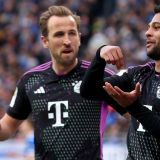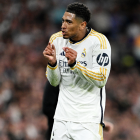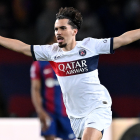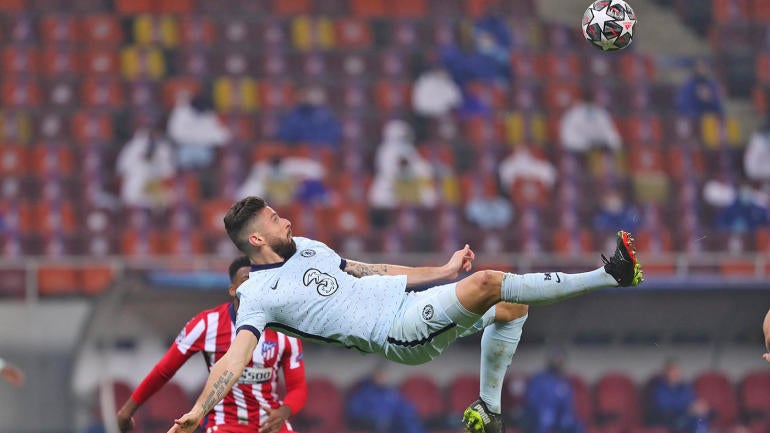
Now more than ever, with the introduction of video assistance in the beautiful game, it is critical for viewers to understand the laws of the game (LOTG). Understanding the rules and the finer points of how referees are instructed to apply those rules helps everybody appreciate where modern football has taken us. My mission is to tackle those critical moments from a referee's perspective as a way to bridge the gap between what we expect from the sport and how the LOTG are applied consistently across the world.
This week in the Champions League, two major refereeing incidents stood out and resulted in decisions that impacted the course of their matches, and in theory, the course of the tournament. Let's dig in.
First there was Olivier Giroud's goal, originally ruled offside but overturned by VAR and allowed to stand, and then there was the Remo Freuler which handed Real Madrid a man advantage over Atalanta.
Giroud's bike: Deliberate play or deflection?
Let's come out hot with Chelsea's Olivier Giroud's brilliant bicycle kick awarded as a goal after video assistant referee (VAR) Marco Fritz recommended a review to overturn the offside decision against Giroud because of the deliberate play by Atletico Madrid defender Mario Hermoso leading up to Giroud's goal.
Worth the wait. Olivier Giroud with a spectacular finish. 🚲 pic.twitter.com/VT5ojrD2NS
— Champions League on CBS Sports (@UCLonCBSSports) February 23, 2021
I truly love this kind of play because it's so complex and all the members of the refereeing team need to work together to get this correct under the pressure and scrutiny of a game-changing decision. The time VAR Fritz and referee Felix Brych took to overturn the offside decision and confirm the goal (2 minutes, 48 seconds) is worth its weight in gold and even the most stringent VAR critics may have to accept that in this instance it worked like a charm.
During live play, Brych is in the general recommended position for the play leading up the left flank and crossed into the penalty area. Unlucky for him, his view at the time the ball is played by Hermoso is through the back of not only Mason Mount, who is also attempting to play the ball, but an additional Atleti midfielder as well. Aggravating the situation further is the awkward play by Hermoso, who plays the while ball facing forward, but somehow skews the ball backwards, a kind of touch not expected at this level.
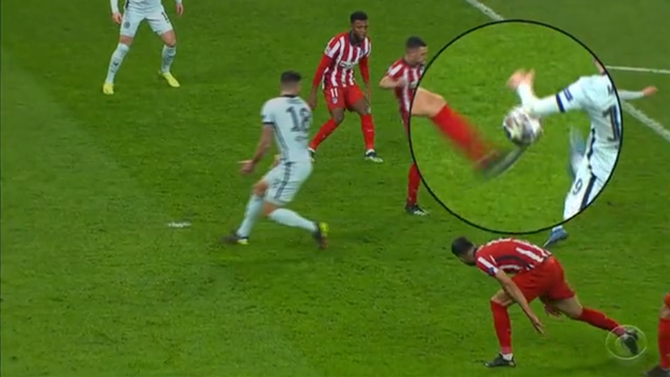
Referees are trained not to guess, and by the time the ball gets to Giroud, it would be nearly impossible for Brych to confidently inform near assistant referee Mark Borsch over the communication system whether it was Mount who played the ball first or Hermoso deliberately playing the ball. And likewise, impossible for Borsch to know for a fact who last played the ball to Giroud.
Referees are trained in tight plays like this -- where an assistant referee would not be able to see who last played the ball before it got to the attacker in an offside position -- to be proactive and automatically inform the assistant referee over the microphones whether the attacker or defender played the ball. The words "attacker, attacker" or "defender, defender" are usually shouted over the communication system, triggering the assistant referee with the key piece of information needed to determine whether the flag needs to be raised for an offside infraction.
With Giroud in a clear offside position, Borsch would immediately relay over the communication system, if he had enough time, "possible offside" or "delay" to indicate he has an offside infraction, but delayed the raising of his flag as there is an imminent goal scoring opportunity and if the ball finds its way in the back of the net, his offside decision would be allowed to be checked under the VAR protocols.
This brings us to a technicality in the laws of the game that was first introduced in 2016-17 LOTG. Specifically, in Law 11:
A player in an offside position receiving the ball from an opponent who deliberately plays the ball (except from a deliberate save by any opponent) is not considered to have gained an advantage.
Since 2016, the application of this law into context has grown, but the basic considerations a referee is instructed to apply to whether a "deliberate" play on the ball occurs is:
- Did the defender go to play the ball -- a conscious act
- Does the defender have time and options
- Does the defender have control of his/her actions -- the outcome of the actions is irrelevant
- Is there distance and space between the pass and the defender playing the ball
These considerations help guide the referee team to come to the right answer and what the football community expects and has asked for in these kinds of situations.
Applying these in turn, Fritz quickly had to break down from the video each of these considerations and confirm them with Brych to come to the factual outcome Brych most likely needed: Did Hermoso in fact deliberately play the ball or was it Chelsea's Mount?
- Hermoso consciously went toward the ball in an attempt to defend and clear the ball
- Hermoso could have decided to stand his ground and continue to mark Giroud instead of taking a few steps toward the ball
- Hermoso is clearly in control of his attempt to clear the ball
- The ball comes from a cross and an attempt to initially play by Giroud, giving Hermoso time to anticipate and attempt to play the ball (vs. a shot on goal where he may not have had time to move or truly think)
Verdict: After confirmation of the deliberate play and factual confirmation (with the help of the reverse camera angle), it was Hermoso and not Mount -- the referee team comes up with the right decision that would have not been called correctly but for video technology.
Atalanta red: Did Freuler's crime fit the punishment?
Perhaps Giroud's goal wasn't the biggest call to dissect this week. Let's look at whether Atalanta's Remo Freuler deserved a red card for this tackle.
17 minutes in and Atalanta are down to 10. 😳 pic.twitter.com/jKtBecBkVY
— Champions League on CBS Sports (@UCLonCBSSports) February 24, 2021
He did. That's right, German referee Tobias Stieler correctly issued a red card to Freuler. Now here's why:
Denying a goal OR an obvious goal scoring opportunity (DOGSO) has teeth -- legit teeth -- for the offender because of the impact it has on a play. Denying a team that opportunity to score is a big deal. Ignoring the severity of the foul (careless, reckless, excessive force, etc.), it just has to be a foul and I think we can all begin this discussion with agreeing that Atalanta's Freuler fouled Real Madrid's Ferland Mendy just outside the penalty area.
We good? Good.
Now let's get into the meat of DOGSO under Law 12. For a DOGSO infraction to have occurred, the following must be considered:
- Distance between the offense and the goal
- General direction of the play
- Likelihood of keeping or gaining control of the ball
- Location and number of defenders.
Here's a still shot at 16:51 that correctly captures when the foul occurred. It's the "snapshot" the referee team must take when breaking down DOGSO considerations:
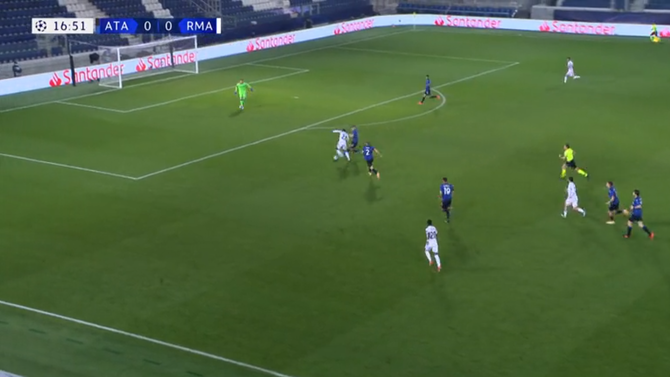
Applying the four DOGSO considerations, two are easily satisfied:
- Distance between the offense and the goal (top of the penalty area)
- Location and number of defenders (no one else can get to Mendy)
If you argue Atalanta's Cristian Romero on the top of the penalty area has enough speed to cover 10-15 yards and get in front of Mendy before he takes a shot off, you are watching too many superhero movies.
Here are the two being debated and why they still satisfy DOGSO criteria starting with "general direction of play."
1. General direction of play: The keyword is "general" and factually Mendy finds himself near or close to being directly on the frame to the goal. If at this moment Mendy had taken a really wide touch sending him wide of goal, I would agree, but the video doesn't support that argument and a referee isn't instructed to work hard to argue general direction isn't satisfied if, in fact, it is much closer to the general direction of the goal and on the frame at that.
2. Likelihood of keeping or gaining control of the ball: Here is the snapshot after the foul at 16:52. If Mendy had not been fouled, he would have still been on his feet and either at the ball or a couple of steps away from the ball given he was on a full-speed attack.
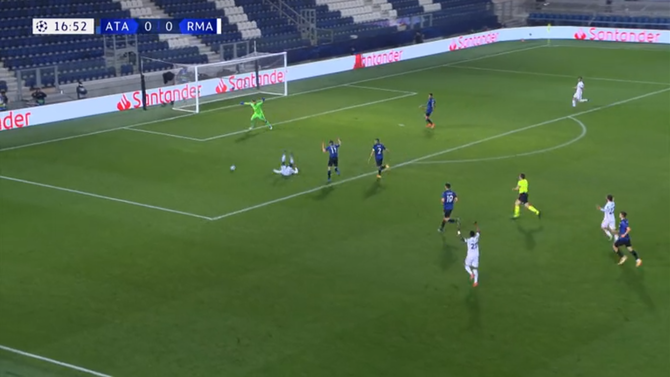
At first, if you argued that Atalanta's goalkeeper Pierluigi Gollini would or could have gotten to the ball before Mendy, I would have waffled and said you might be right at first glance. The first time I saw the play live, I recalled Gollini being out of the goal area and playing high. But on the second review live and the snapshot at 16:52, Gollini was actually moving backward when he realized Frueler was beaten to cover the near post. It wasn't until Mendy was fouled and had a good full body roll that Gollini begin to move laterally toward the ball.
To simplify this, I prefer the "but-for" analysis. One question: "But for Frueler fouling Mendy when he was on full attack would Mendy have been able to get an opportunity to score a goal on this play."
Referees aren't able to analyze whether Mendy in fact is 100% guaranteed a goal if he gets to the ball or whether he will instead decide to pull the ball back and wait for an approaching teammate -- we are only able to consider whether the position he would have been but for the foul would give him an obvious goal-scoring opportunity -- to consider his other options would be too speculative.
No offense to Mendy, but if this was a prolific attacker like Kylian Mbappe or Erling Halaand who had been fouled by Frueler, would we still be having this discussion on whether the "likelihood of keeping or gaining control of the ball" was satisfied in our DOGSO analysis when determining whether an obvious goal-scoring opportunity exists? Let alone the whole conversation? Ponder that.
Referees are not trained or instructed to take the time of the match into consideration when having to make game-critical calls like this. We must properly punish the foul no matter when it comes, whether that's the first minute, 89th minute, extra time, or in this case the 17th minute. Was I as excited as the rest of the football world to see an attacking Atalanta mindset coming into this game with momentum take on Spanish powerhouse Real Madrid? Of course I was, and of course the referee team on the match knew their work would be cut out for them in this matchup, but a foul is a foul is a foul and we must be consistent even when the passion inside us would rather referee 11 v. 11 for that entire 90 minutes.
As for the punishment being a red card, some fans and pundits have embraced after the 2016-17 LOTG revision that every DOGSO is now only a yellow card, but that's not correct. The difference in the shade of the card is dependent on where the offense occurred (so long as the foul itself isn't a red card infarction -- violent conduct excessive force, serious foul play). So if a DOGSO infraction occurs inside the penalty area and the offender was attempting to play the ball then a yellow card is issued. If the DOGSO occurs outside the penalty area even if the offender was attempting to play the ball -- the card is red.
Reason for the law change -- in the previous LOTG when red cards were always automatic with a DOGSO, a penalty area DOGSO in effect was a "triple punishment" on the defending team -- (i) down a player rest of the game; (ii) penalty kick awarded; and (iii) since it was direct red the offender was also suspended from the next applicable match. The football world agreed too harsh in handing a triple punishment for most times just a careless foul and more technical/strategic foul and from there came DOGSO yellow vs. red.
Verdict: Knowing the DOGSO criteria that must be met and the place of the offense is critical for viewers, analysts and even players themselves to understand that the punishment does in fact fit the crime. Now, who wants to fight?






